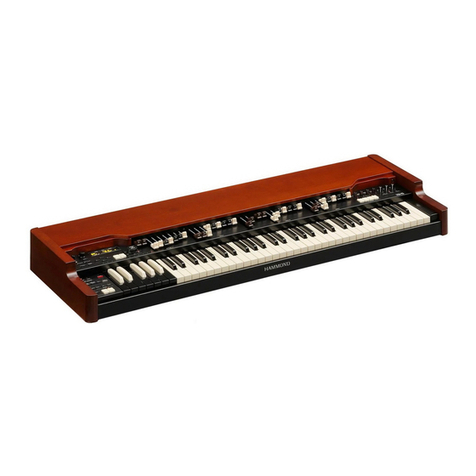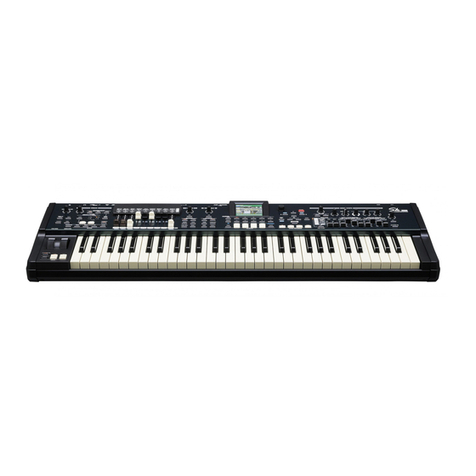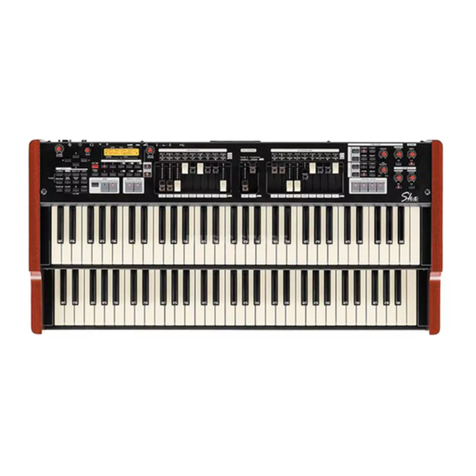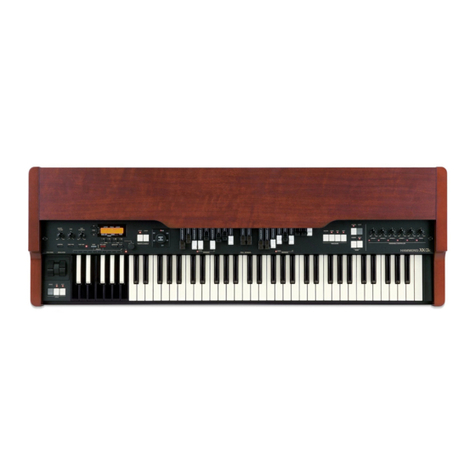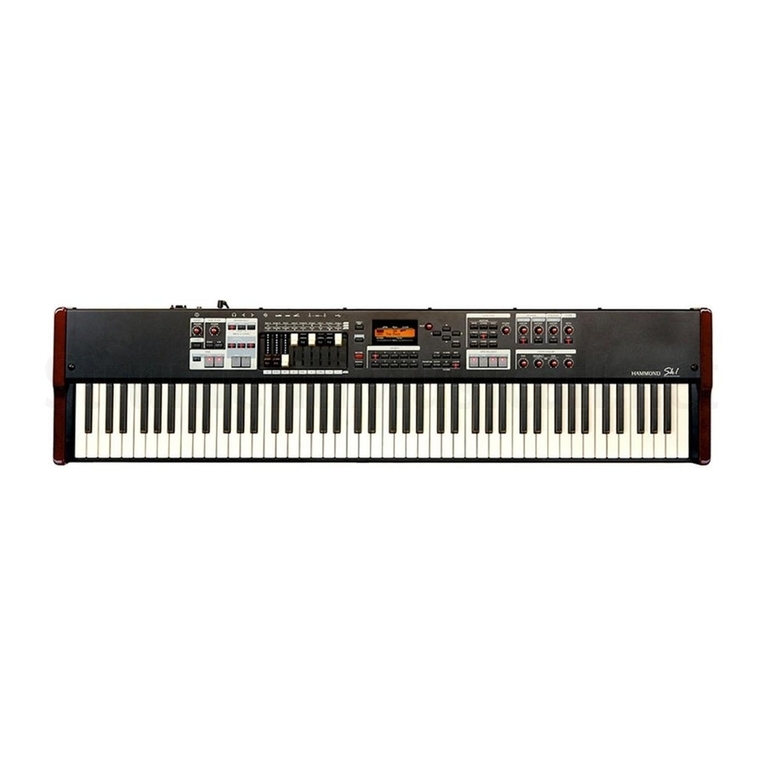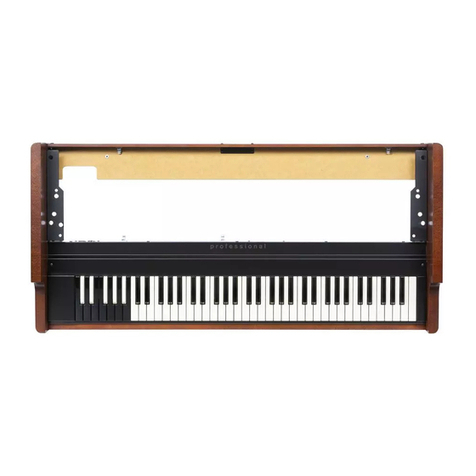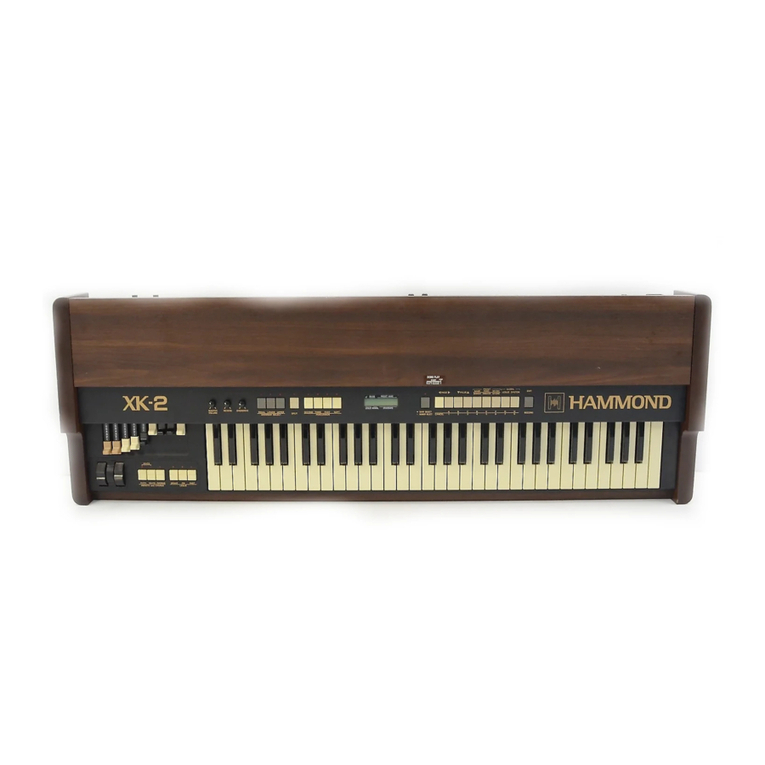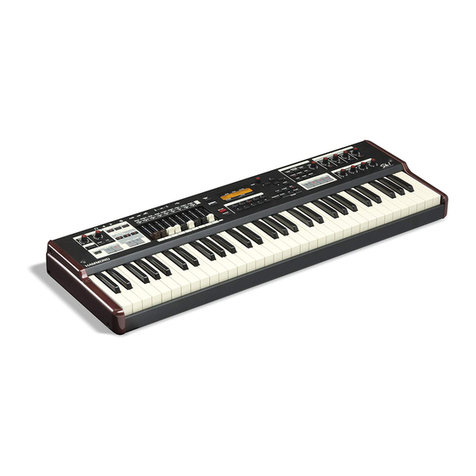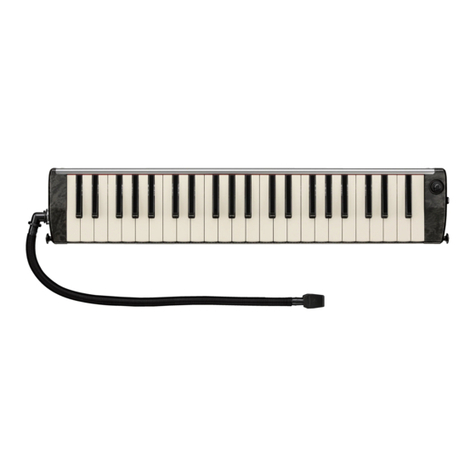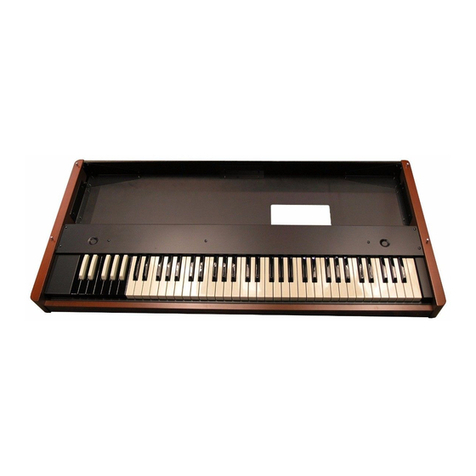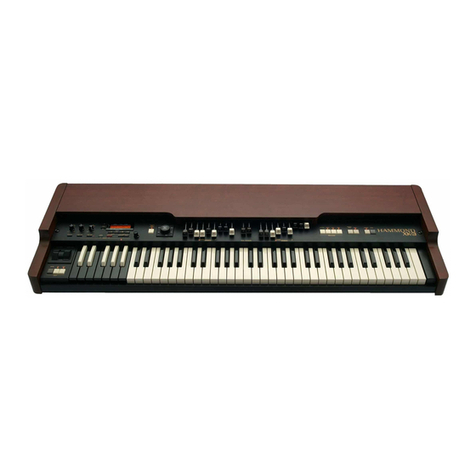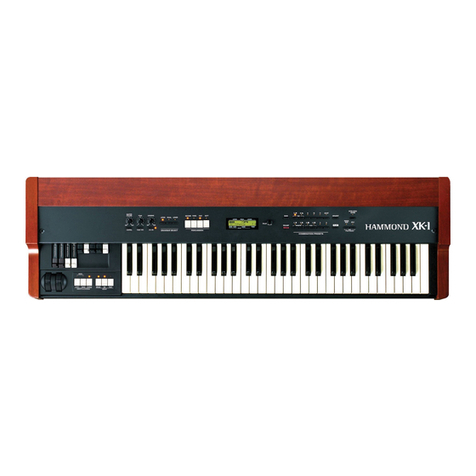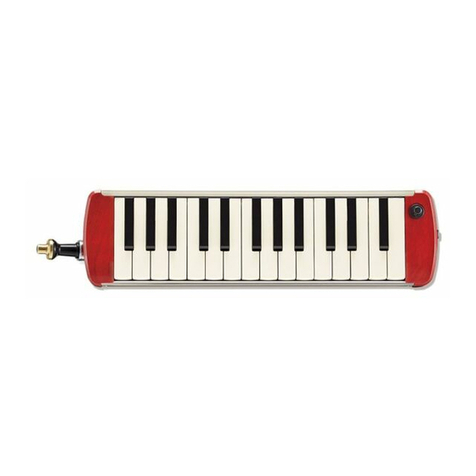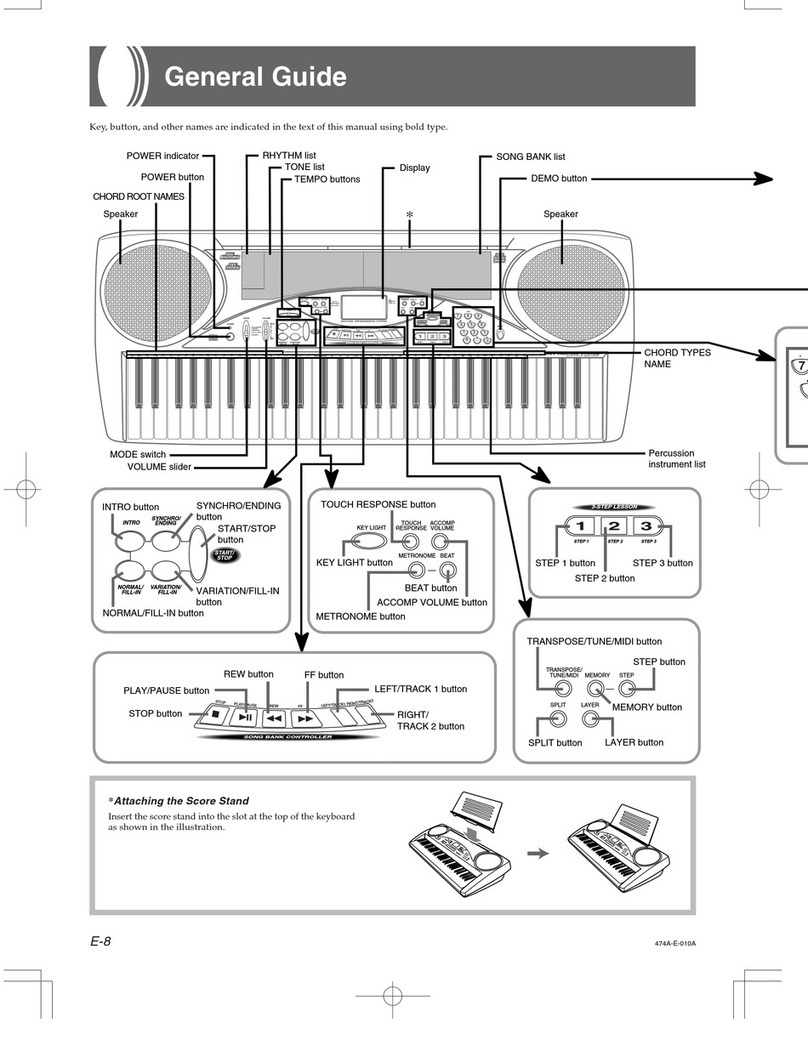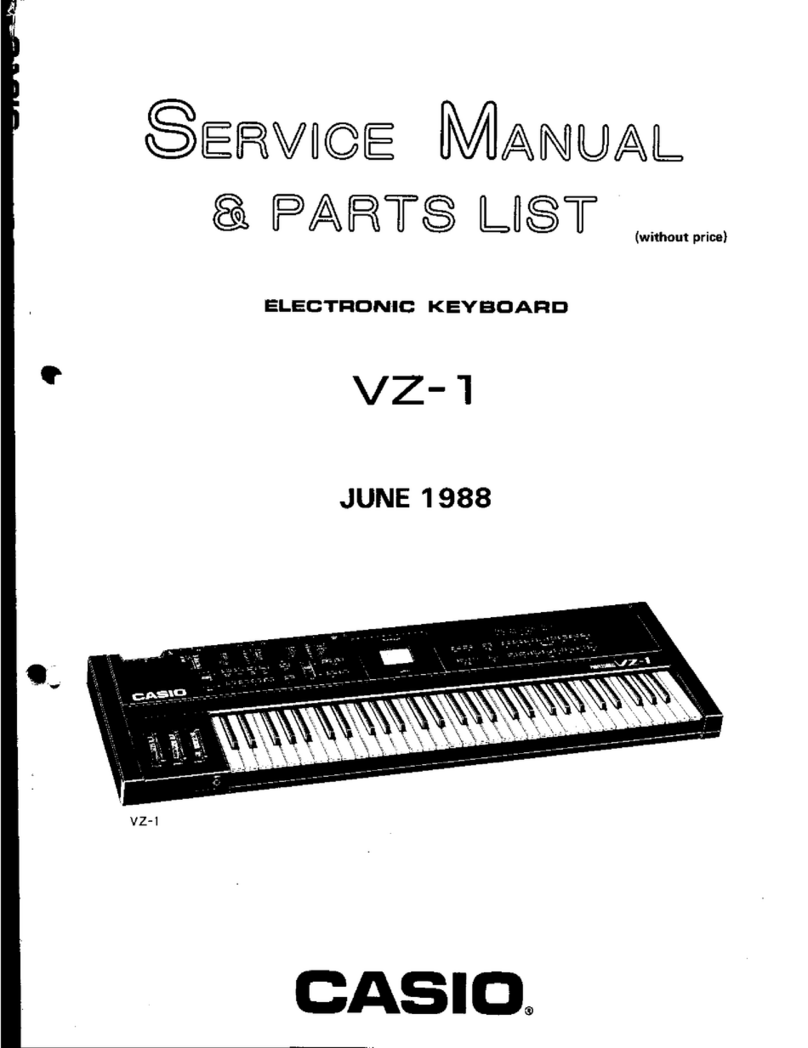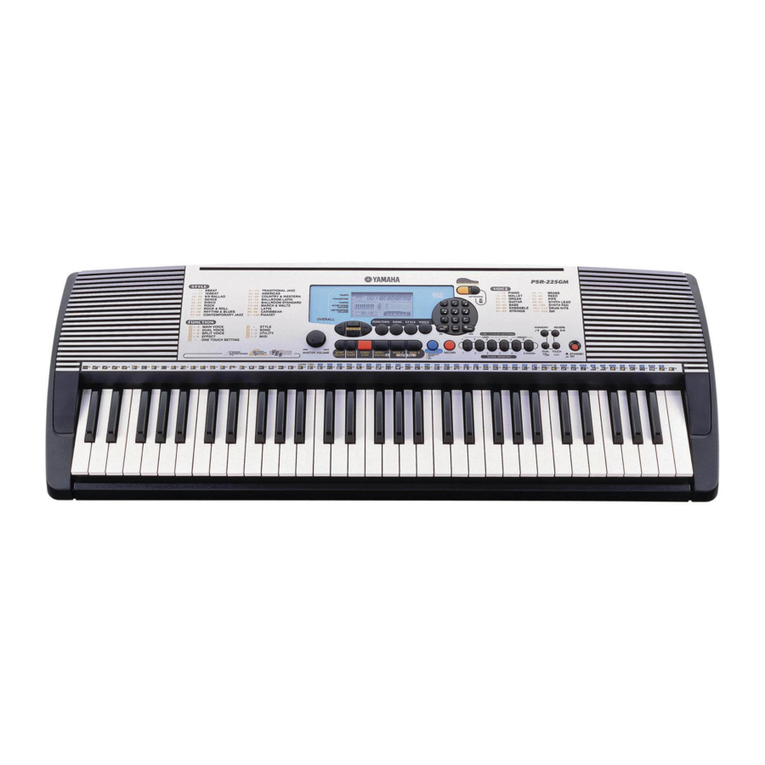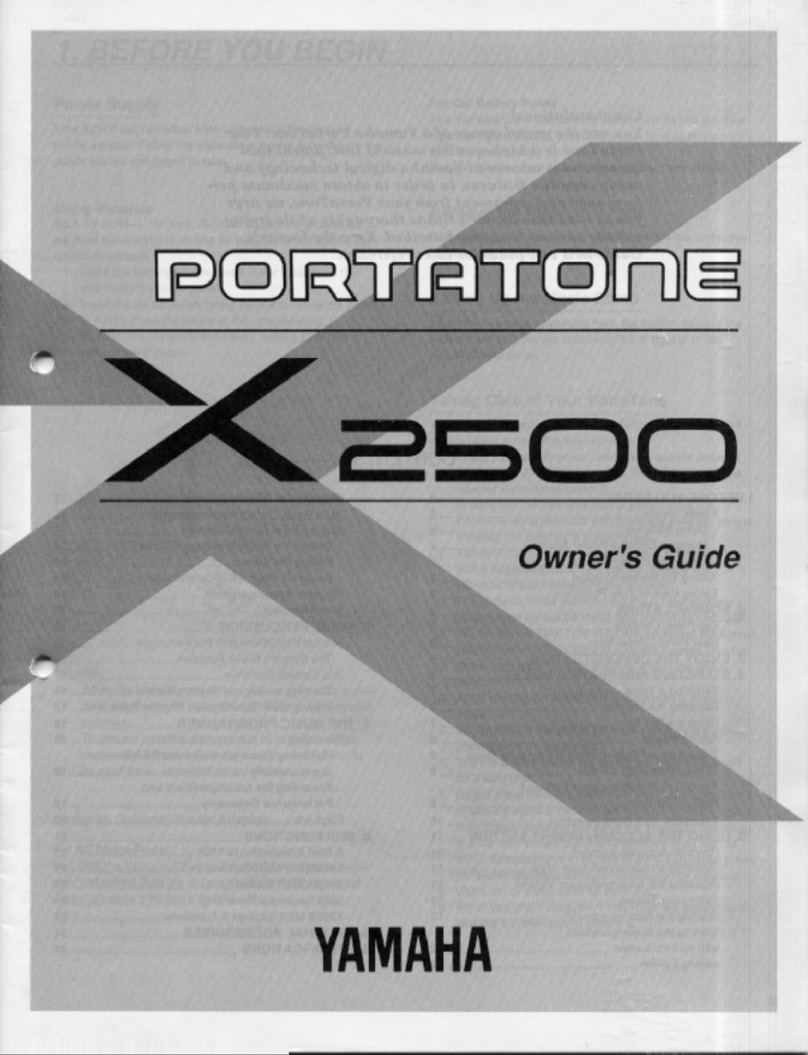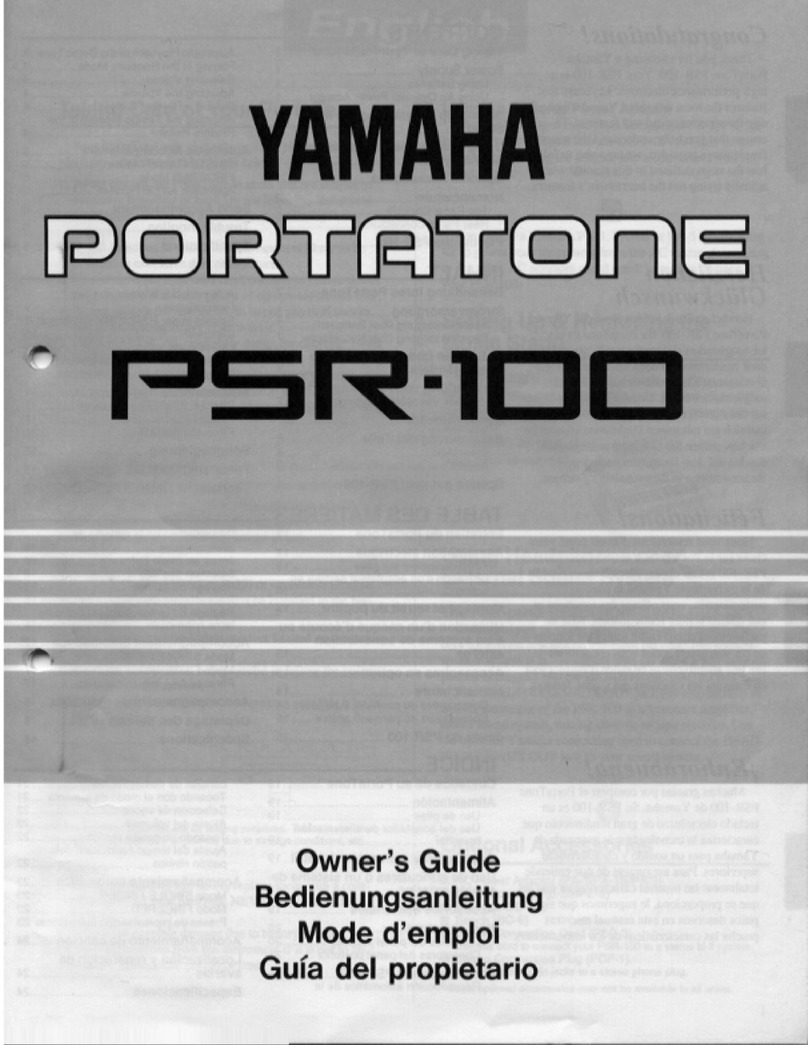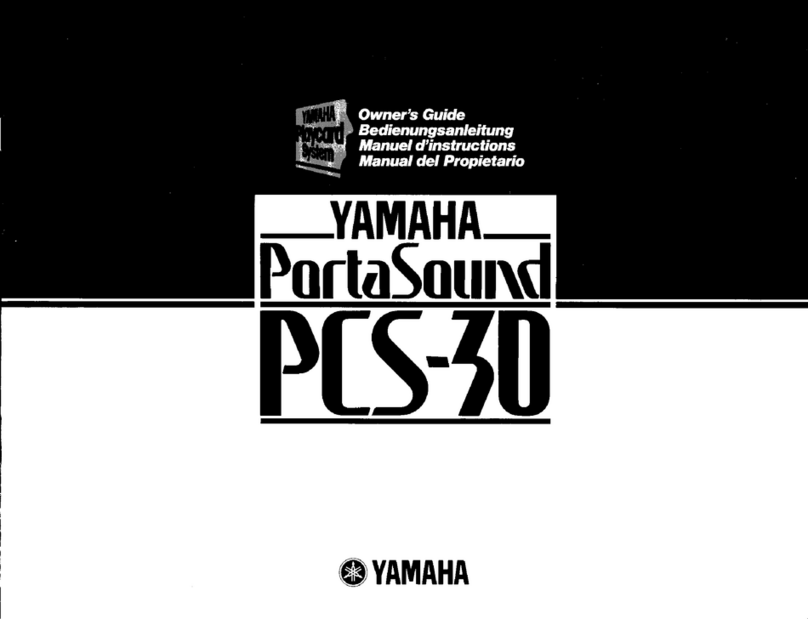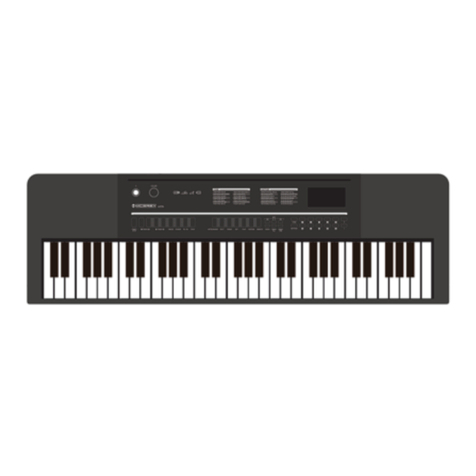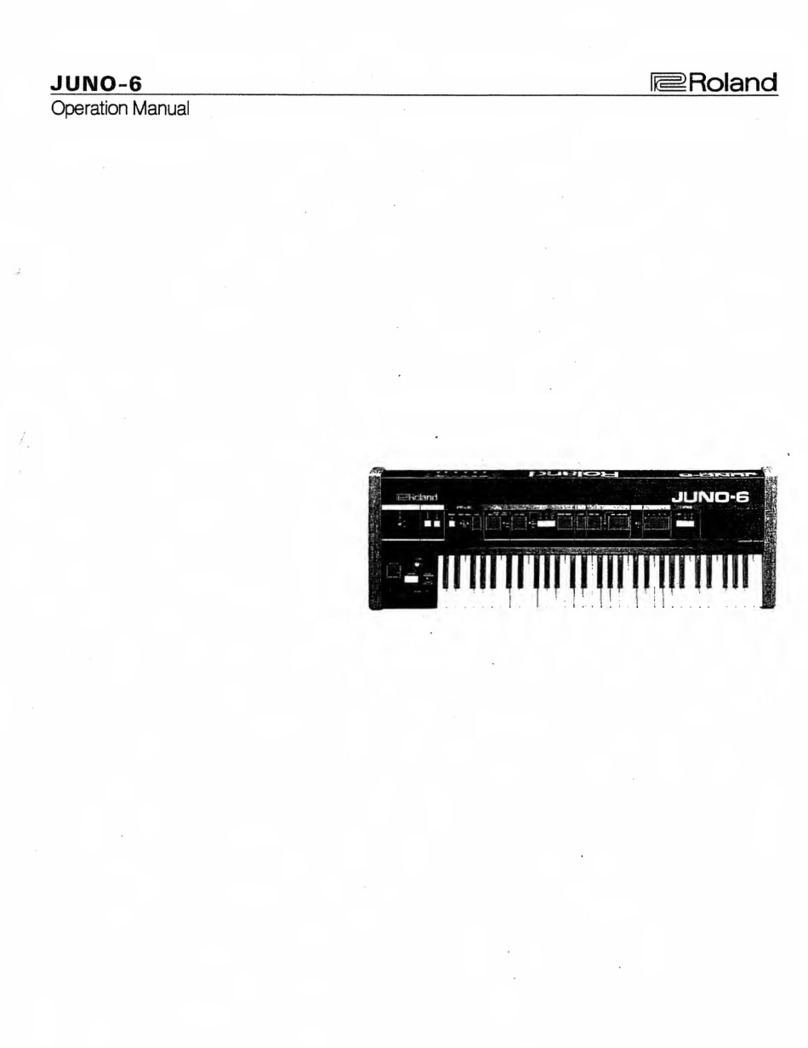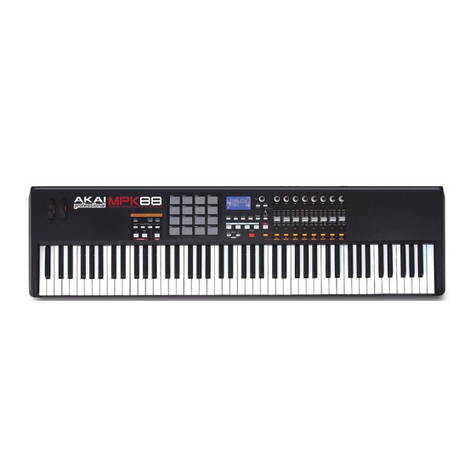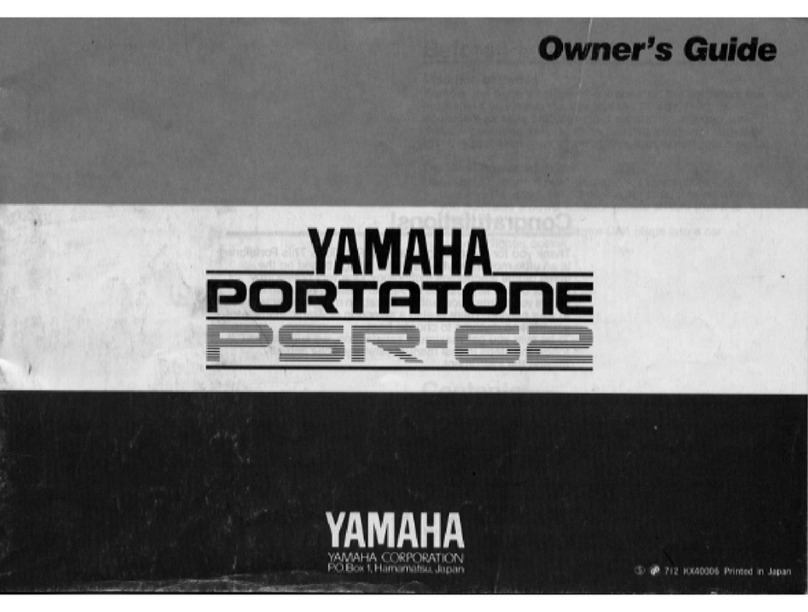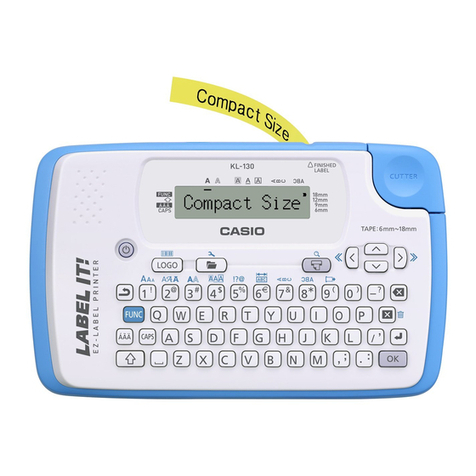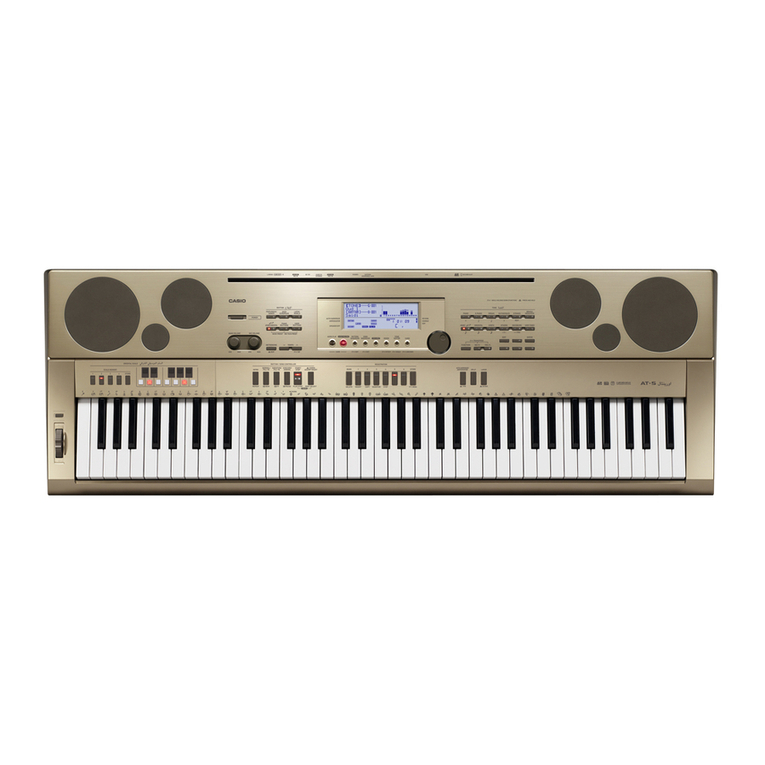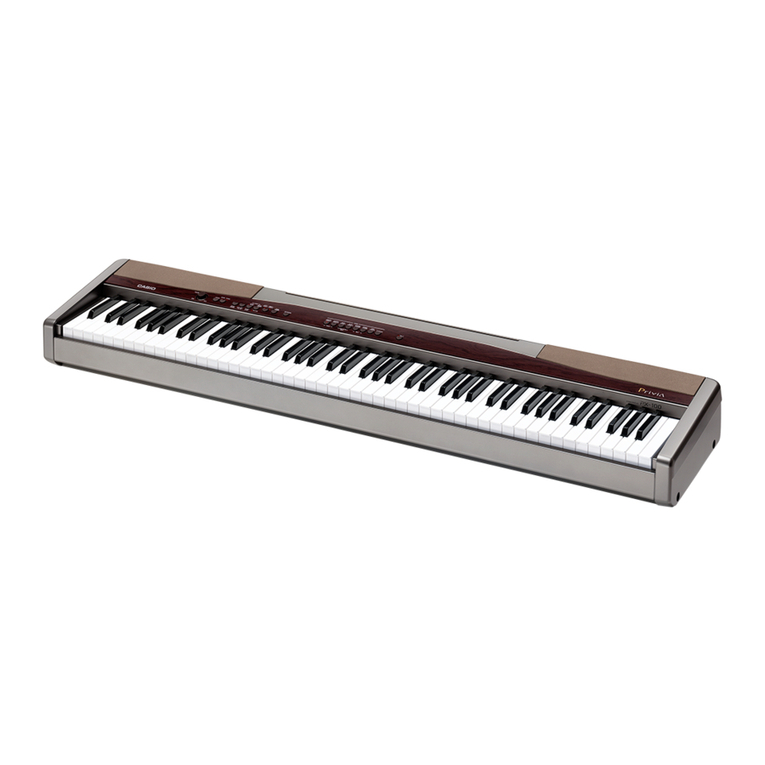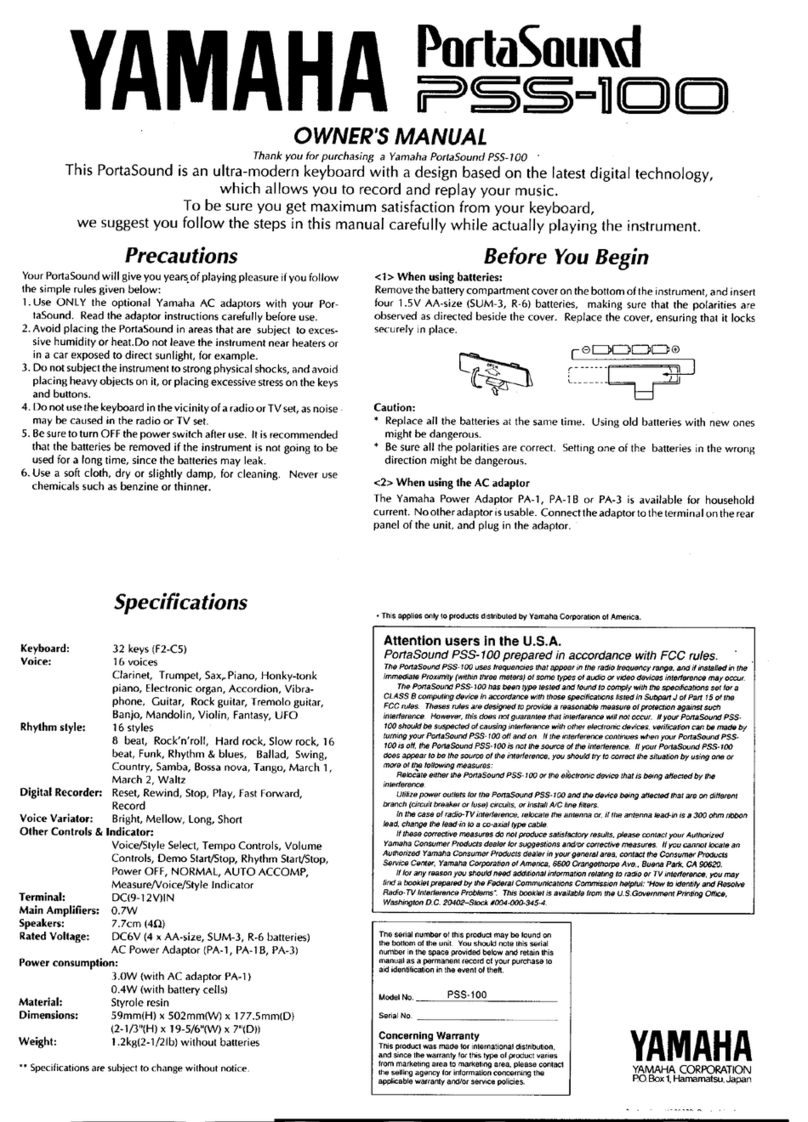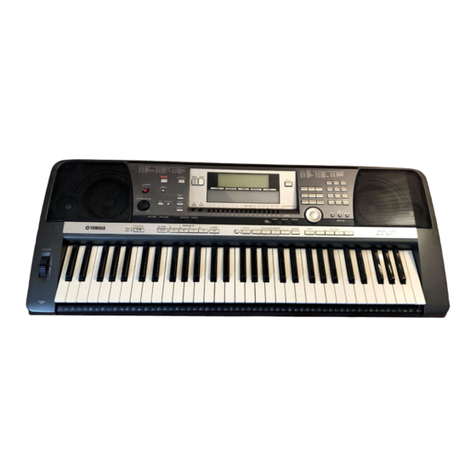
7
Introduction
PARAMETER OPERATION EXAMPLE:......................................................64
LOCKING THE DISPLAY...............................................................................66
SETTING THE PARAMETERS ...67
DRAWBAR.................................................................................................68
SETTING FOR MANUAL (LOWER & UPPER) DRAWBARS ....................68
SETTING THE PEDAL PART...........................................................................69
PATCH.........................................................................................................70
PATCH NAME ....................................................................................................70
PATCH LEVEL.....................................................................................................70
PATCH LOAD .....................................................................................................70
FAVORITES.........................................................................................................70
TUNE ..........................................................................................................71
TRANSPOSE ......................................................................................................71
MASTER TUNE ..................................................................................................71
CONTROL..................................................................................................72
FOOT SWITCH...................................................................................................72
EXPRESSION......................................................................................................73
GLIDE...................................................................................................................73
DAMPER.............................................................................................................74
DISPLAY..............................................................................................................74
KEYBOARD ........................................................................................................74
PERCUSS (Percussion)..........................................................................76
VIB&CHO (Vibrato & Chorus).............................................................77
LESLIE.........................................................................................................78
CABINET NUMBER ..........................................................................................78
LESLIE PARAMETERS......................................................................................78
EXTERNAL LESLIE SPEAKER.........................................................................80
RECORD THE CABINET................................................................................80
CUST. TW (Custom Tone-Wheels) ....................................................81
Record the CUSTOM virtual TONEWHEELS setting..........................83
PIPE.............................................................................................................84
OD / EFF (Overdrive / Effects)............................................................86
OVERDRIVE.....................................................................................................86
MULTI-EFFECTS ....................................................................................................86
EQUALIZ (Equalizer)..............................................................................94
PATCH EQUALIZER..........................................................................................94
PATCH EQUALIZER and MASTER EQUALIZER........................................94
REVERB ......................................................................................................95
DEFAULT....................................................................................................96
SYSTEM......................................................................................................97
MIDI .........................................99
ABOUT MIDI.......................................................................................... 100
WHAT IS “MIDI”? ........................................................................................100
MIDI JACKS ON THIS KEYBOARD .........................................................100
WHAT THE MIDI CAN DO ON THIS KEYBOARD ...............................100
MAIN MIDI MESSAGE............................................................................... 101
CHANNEL MESSAGE........................................................................................ 101
SYSTEM MESSAGE............................................................................................101
MIDI STRUCTURE ................................................................................ 102
KEYBOARD CHANNELS.............................................................................. 102
EXTERNAL ZONE CHANNELS................................................................... 102
EXPANDED KEYBOARDS............................................................................ 102
USING AN EXTERNAL SEQUENCER............................................... 104
Recording a organ performance to an Sequencer/DAW .............. 104
Sequencer playback ................................................................................... 104
USING A MIDI SOUND MODULE.................................................... 105
ZONES..................................................................................................... 106
WHAT IS DISPLAYED ON THE UPPER LEFT?.........................................106
INTERNAL ZONE........................................................................................... 106
EXTERNAL ZONE .......................................................................................... 106
PANIC FUNCTION AND PARAMETER RE-LOAD....................................... 107
MIDI......................................................................................................... 108
MIDI TEMPLATE.............................................................................................108
MASTER........................................................................................................... 108
KEYBOARD CHANNELS.............................................................................. 109
SAVE THE SETUP ...................111
SAVE YOUR SETUP .............................................................................. 112
WHAT YOU CAN DO WITH THE USB FLASH DRIVE.........................112
ABOUT USB FLASH DRIVE......................................................................112
USABLE USB FLASH DRIVE ............................................................................ 112
USB CONNECTOR .............................................................................................112
FOLDER STRUCTURE ....................................................................................... 112
INITIALIZE THE USB FLASH DRIVE................................................. 113
SETUP PROCEDURES ......................................................................... 114
HOW TO READ THE DISPLAY .................................................................114
SAVE THE SETUP........................................................................................114
CHANGE THE SETUP NAME ...................................................................115
LOAD THE SETUP.......................................................................................116
DELETE THE SETUP ...................................................................................116
PATCH PROCEDURES ......................................................................... 117
HOW TO READ THE DISPLAY .................................................................117
SAVE THE PATCH FILE...............................................................................117
LOAD THE PATCH FILE .............................................................................118
DELETE THE PATCH FILE..........................................................................118
Troubleshooting ...................119
TROUBLESHOOTING.......................................................................... 120
APPENDIX..............................121
MIDI TEMPLATES................................................................................. 122
MIDI TEMPLATES .......................................................................................122
PRESET PATCH LIST............................................................................. 123
MIDI INFORMATION........................................................................... 124
MIDI Implementation..............................................................................124
Channel Voice Message ................................................................................ 124
Channel Mode Message ................................................................................ 124
Drawbar Data List 1..................................................................................125
Control Number................................................................................................ 125
Drawbar Data List 2..................................................................................125
System Exclusive Message.....................................................................126
Mode Setting Exclusive Message ............................................................... 126
NRPN Switch ...................................................................................................... 126
Data Set (Rx. only)............................................................................................ 126
Identity Request (Rx. only)............................................................................126
Identity Reply (Tx. only) .................................................................................126
Global Parameters .................................................................................... 127
Patch Parameters......................................................................................128
Leslie Parameters......................................................................................132
System Parameters...................................................................................132
Tonewheel Parameters ...........................................................................132
Pipe Parameters.........................................................................................132
